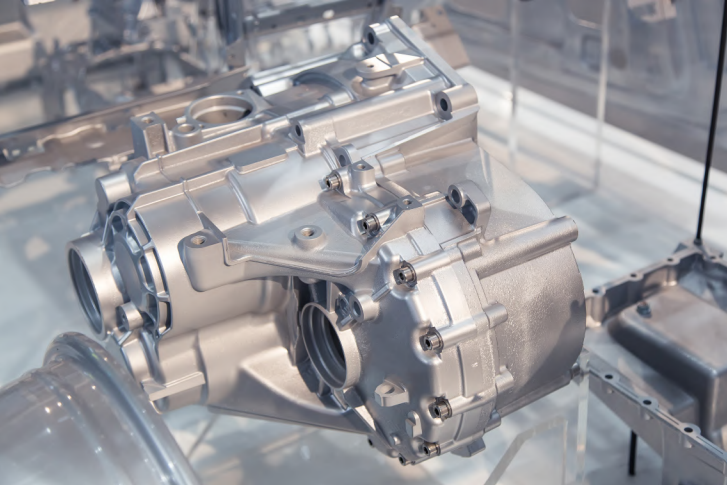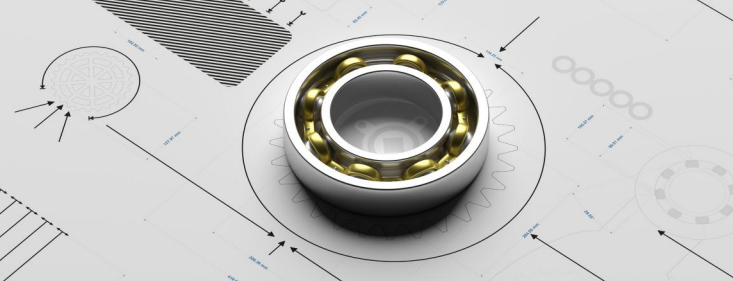Why does Bearing Selection Play a Crucial Role in Gearbox Performance?
Author Gear Technology India on June 19, 2023
By: Nishant Kashyap
Bearings play a critical role in the smooth and efficient operation of gearboxes. They are responsible for supporting the rotating shafts and gears, distributing loads, and minimizing friction. Understanding the function and challenges faced by bearings in gearboxes is essential for appreciating their importance in overall performance.
Some key aspects to consider are: load distribution, rotational stability, friction reduction, lubrication management, operating conditions, noise and vibration control among others.
It is important for engineers to recognize the challenges faced by bearings in gearboxes and consider these factors during the selection process, so they can make informed decisions to ensure optimal gearbox performance and reliability.
Impact of Bearing Selection on Gearbox Performance
A key area where bearing selection influences gearbox performance is durability and lifespan. By choosing bearings with appropriate load capacities and robust construction, engineers can enhance the durability of gearboxes, and reduce the risk of unexpected failures and ensure long-term performance.
Additionally, bearing selection directly affects the efficiency and power transmission within gearboxes. Bearings with low friction and high efficiency minimize energy losses, leading to improved power transmission, reduced energy consumption, and enhanced system performance.
Another important aspect influenced by bearing selection is the noise and vibration levels. By selecting bearings with optimized design features, precision manufacturing, and appropriate internal clearances, unwanted noise and vibrations can be reduced, resulting in a better user experience and prolonged lifespan of gearbox components. Moreover, the operating speed and temperature range of gearboxes must be considered when selecting bearings.
Different bearing types and designs have specific speed and temperature limitations, and choosing bearings suitable for the intended operating conditions ensures reliable performance. Proper bearing selection also affects lubrication and maintenance requirements. Bearings have specific lubrication needs, and selecting bearings compatible with the intended lubrication method and frequency, simplifies maintenance procedures and improves overall gearbox performance.
Furthermore, ensuring compatibility with application requirements is crucial. Gearboxes are used in various applications with specific operational demands, and selecting bearings that align with these requirements, considering factors such as load type, operating environment, speed variations, and expected service life, ensures reliable and efficient gearbox operation.
Factors to Consider for Bearing Selection
The following factors should be carefully considered during the bearing selection process:
Load Capacity: One of the primary considerations is the bearing’s load capacity. It should be able to handle the anticipated radial and axial loads generated within the gearbox, while taking into account peak loads and variations during operation. Choosing bearings with appropriate load ratings ensures that they can effectively support the applied loads without premature wear or failure.
Speed and Operating Conditions: The operating speed of the gearbox is a critical factor in bearing selection. Different bearing types have specific speed limitations, and exceeding these limits can result in overheating, accelerated wear, and reduced service life. Additionally, the operating conditions, such as temperature, humidity, and presence of contaminants should be evaluated to ensure the selected bearings can withstand the environmental demands.
Lubrication Requirements: Proper lubrication is vital for bearing performance. The type and amount of lubricant required should be considered during bearing selection. Factors such as speed, temperature, and operating conditions influence the lubrication requirements. Bearings may require grease or oil lubrication, and the appropriate lubrication intervals and methods should be determined to ensure optimal performance and minimize friction-related issues.
Bearing Clearance and Preload: The clearance or preload of the bearings affects their internal fit and play a role in overall gearbox performance. The choice of clearance or preload depends on factors such as the desired level of rigidity, operating conditions, and the specific application requirements. Proper clearance or preload selection ensures the desired balance between smooth operation and load-bearing capacity.
Bearing Material and Design: Bearings can be made from various materials including steel, ceramic or polymers each with its own advantages and limitations. The material selection should consider factors such as load capacity, temperature resistance, corrosion resistance, and desired performance characteristics. Additionally, bearing design features such as cage design, sealing options, and lubrication systems should be assessed to ensure compatibility with the gearbox requirements.
Reliability and Maintenance: The reliability and maintenance requirements of the chosen bearings should align with the operational demands of the gearbox. Considerations such as expected service life, maintenance intervals, and availability of replacement parts or support should be evaluated to minimize downtime and ensure long-term reliability.
Types of Bearings for Gearbox Applications
Image source: A needle roller bearing (Red Rooster / Wikimedia Commons)
Various types of bearings are commonly used in gearbox applications with each offering unique characteristics and benefits. Understanding the different types of bearings helps in selecting the most suitable option for specific gearbox requirements. Here are some commonly used bearing types in gearbox applications:
Ball Bearings: Ball bearings are widely utilized in gearboxes due to their versatility and high-speed capabilities. They consist of steel balls housed within inner and outer races, enabling smooth rotation with low friction. Ball bearings are suitable for applications with moderate radial and axial loads, providing good radial support. They come in various configurations, including deep groove ball bearings, angular contact ball bearings, and thrust ball bearings.
Roller Bearings: Roller bearings are known for their ability to handle heavy radial loads and moderate axial loads. They utilize cylindrical or tapered rollers instead of balls, distributing loads over a larger contact area. Roller bearings are suitable for gearboxes with higher load capacities and applications with significant radial and axial loads.
Common types include: cylindrical roller bearings, spherical roller bearings, and tapered roller bearings.
Thrust Bearings: Designed to support axial loads and prevent axial movement within gearboxes, they are often used in conjunction with other bearing types to handle axial forces generated by gears or shafts. These come in various configurations like thrust ball bearings, thrust roller bearings, and thrust needle roller bearings.
Plain Bearings/Bushings: Plain bearings, also known as bushings or sleeve bearings, provide a simple and cost-effective solution for certain gearbox applications. They consist of a cylindrical sleeve made of a low-friction material such as bronze or composite polymers that slides directly against a shaft or housing. Plain bearings excel in applications with lower speeds and lighter loads.
Needle Bearings: Needle bearings are a type of roller bearing that utilize long, thin cylindrical rollers. They have a high length-to-diameter ratio enabling them to handle high radial loads within limited space. Needle bearings are commonly used in gearboxes where compact design and high load capacity are required.
Tapered Bearings: Tapered roller bearings feature conical rollers and races that allows them to handle both radial and axial loads. They are commonly used in gearboxes where axial forces are present such as in automotive applications. Tapered bearings provide high load-carrying capacity and excellent resistance to misalignment.
Conclusion
The importance of bearing selection in gearbox performance cannot be understated. It directly impacts the durability, efficiency, and reliability of gearboxes. Bearings serve crucial functions within gearboxes including load distribution, rotational stability, friction reduction, lubrication management, and noise/ vibration control. Proper bearing selection is essential to enhance the durability of gearboxes, ensuring long-term performance while minimizing the risk of unexpected failures.
The right bearings contribute to improved efficiency and power transmission within gearboxes, reducing energy losses and enhancing overall system performance. Furthermore, bearing selection plays a significant role in controlling the noise and vibration levels generated within gearboxes leading to a better user experience and extending the lifespan of gearbox components.
Taking into account the operating speed and temperature range is crucial when selecting bearings to ensure that they can operate effectively under varying conditions. Additionally, lubrication and maintenance requirements that align with the chosen bearings helps optimize performance and minimize friction-related issues should be considered.
The compatibility of application requirements, such as load type, operating environment, and speed variations is also vital for reliable and efficient gearbox operation.
By carefully considering the above factors, engineers can optimize gearbox performance, minimize downtime, and ensure the longevity of gearboxes in diverse applications. Bearing selection should be approached as a critical aspect of gearbox design and maintenance with the aim of achieving long-term performance, reliability, and efficiency
Post Views: 268



